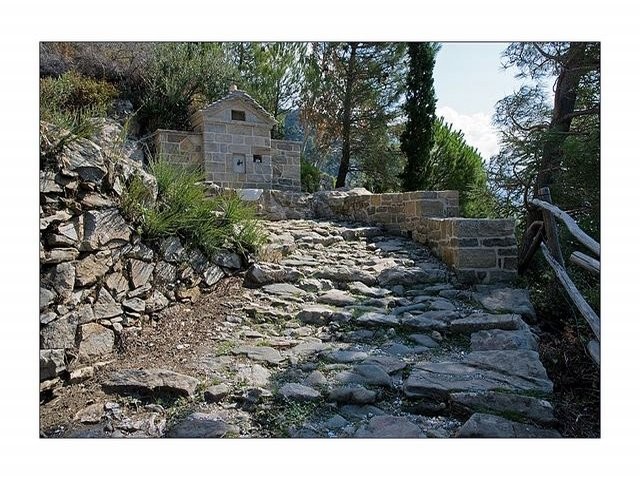The Touristic Info Halkidiki informs: Mount Athos - Monasteries and skites
Moni Chilandariou
Serbian Orthodox, Holiday: November 21
The monastery, which was founded around 1197AD, is the land border between the worldly republic and the monks republic. It lies like a fortress in the valley.
As the founder is Rastko, a son of the Serbian Emperor Stefan Nemanja. He had secretly gone to Athos to live as a monk Savas, first, in the Panteleimon monastery, then in the monastery Vatopedi. In 1197AD his father followed him to the Holy Mountain. Together, they wanted to establish their own convent at the north of the peninsula.
These were the remnants of a monastery that around the year 1000AD was found by Georgios Chelantaris. This was first mentioned in 1015AD. On its walls the two monks built now their new convent, which had the name that has retained until today.
Savas later left Athos in 1220AD and became the first Archbishop of the independent Serbs and is therefore considered the founder of the independent Church of Serbia. The monastery, however, was given in the following centuries steadily donations from home, and his position as the center of the Serbian Orthodox piety was strengthened.
It has got a collection of old icons, a beautiful altar book and several valuable crystal vessels, all from the 14th Century. The church is decorated with frescoes from 1320AD and from the year 1623AD designed into Serbian style.
In 1722AD, approximately two thirds of the monastic buildings were on flames. Another major fire in 1891AD destroyed large parts of the monastery. But in 1896AD King Alexander I, first ruler of the Kingdom of Serbia, came to the monastery and he had the money and the Serbian monks started the reconstruction.
On the night of 6th to 7th March 2004, however, valuable wall paintings from the 18th and 19th Century again came on flames. Many icons, manuscripts and frescoes couldn’t be saved, the material damage was nearly 10 million euros, from the idealistic point of view the destruction is unimaginable.
In addition, the monks had to leave the monastery because of the fire, since up to half of it had been destroyed. Serbia and the Serbian Orthodox Church restored the monastery. The Trapeza and the Katholikon in the southern part of that fire were spared.
Including a splinter from the cross of Christ, a piece of reed, with which the vinegar-soaked sponge was served to Jesus, as well as the Shroud of the crucified (although in Turin have one also). Also there are over 20,000 printing and nearly 1,000 manuscripts, as well as over 400 original documents, testifying the history of the monastery.

Your rental car in Halkidiki
From the airport Thessaloniki, Hotel, Apartment and Studio in whole Chalkidiki. No credit card needed. Fast, easy and safe. For 3 days only from 63.- € !

















